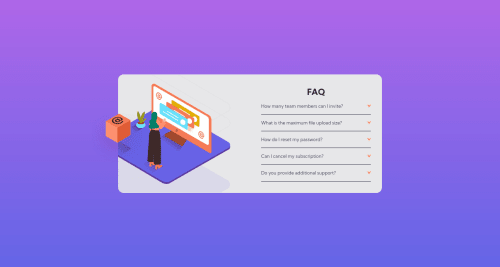Submitted almost 4 years agoA solution to the FAQ accordion card challenge
Mobile first accordion (Flexbox, SASS, JavaScript) - v2
sass/scss, lighthouse
@Ivuska

Solution retrospective
Hi, I have updated the solution so only one item is opened and if user clicks the item twice, it is closed.
Any feedback is appreciated, thank you :)
========================================================================
Hi to everyone from Prague ;-)
I have finished my very first challenge using SASS and also a bit of JavaScript. I struggled very much with positioning of the images...
I would be grateful for tips:
- how to position the images in the easier and more working way - especially in mobile version?
- did I miss some useful feature from SASS that can be used in this challenge?
- how to force to close the accordion item/line if another one is opened (so only one accordion item is opened)?
Thank you a lot and happy coding! :-)
Code
Loading...
Please log in to post a comment
Log in with GitHubCommunity feedback
No feedback yet. Be the first to give feedback on Iva's solution.
Join our Discord community
Join thousands of Frontend Mentor community members taking the challenges, sharing resources, helping each other, and chatting about all things front-end!
Join our Discord